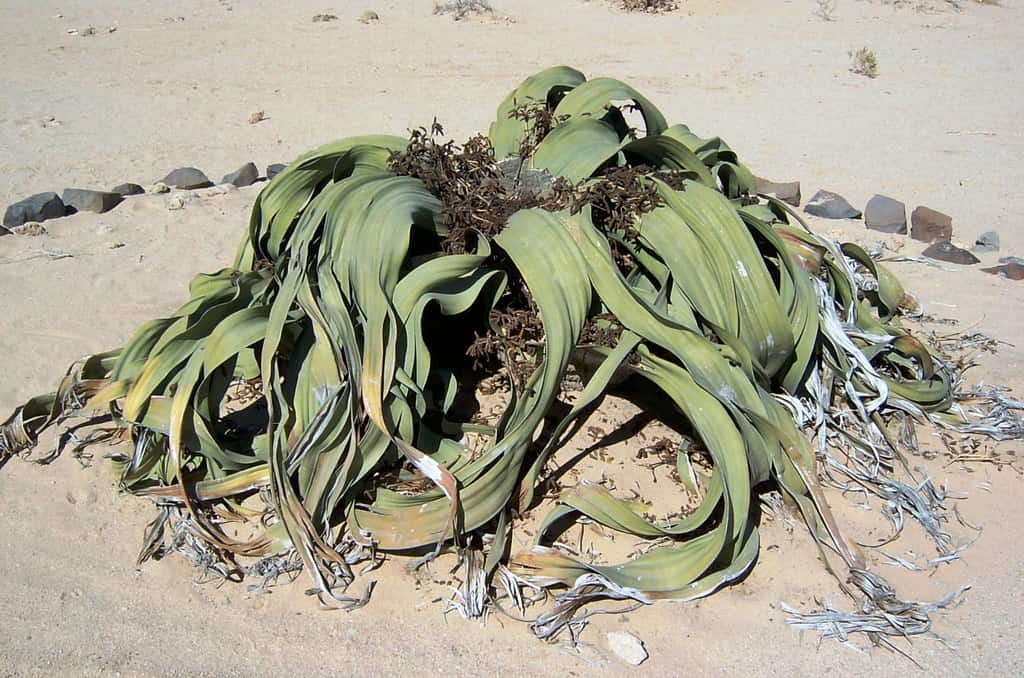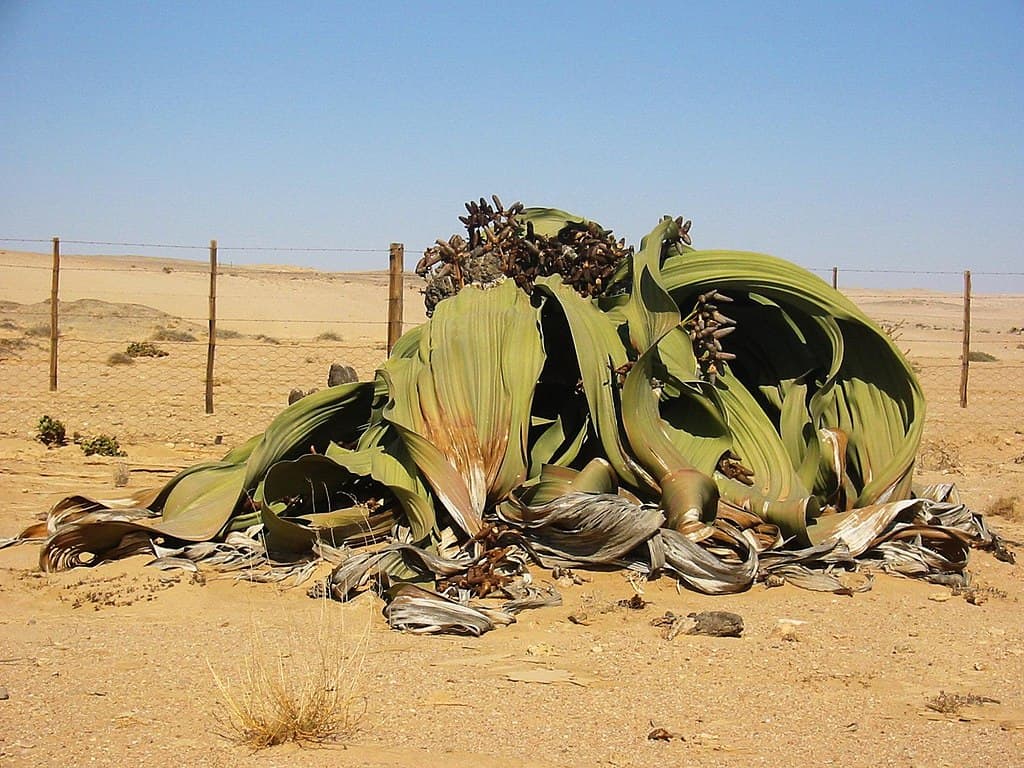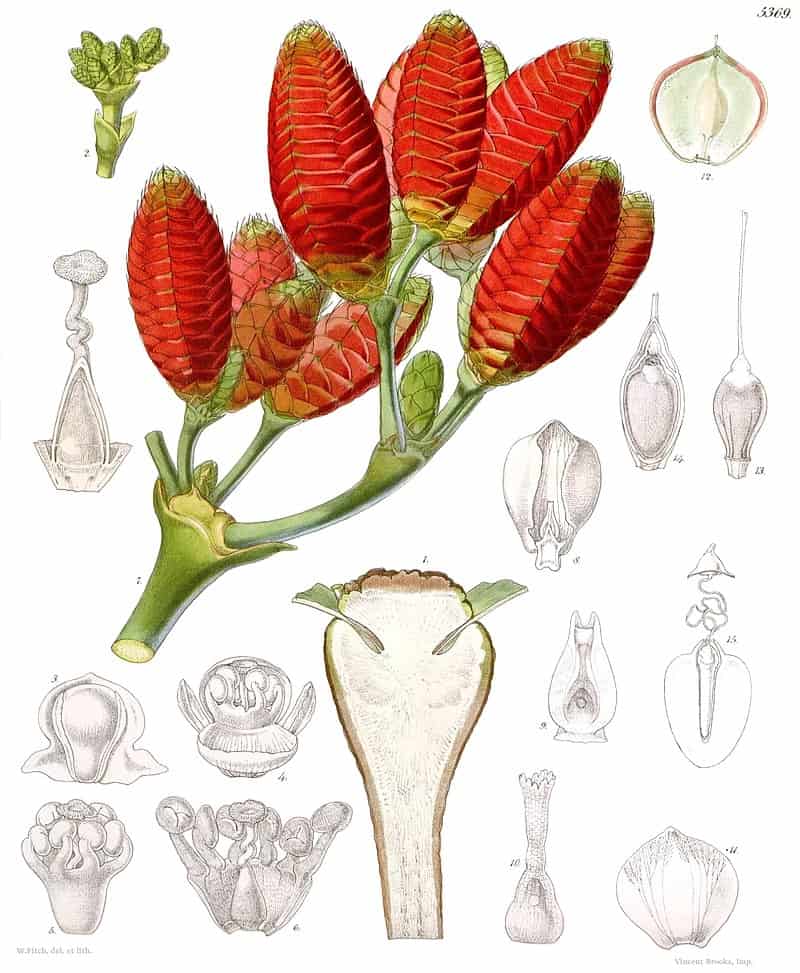
With the rise of the gardening craze, people have been dying to collect the rarest and most beautiful ornamental plants. Being a plant parent certainly requires dedication as some plants are fragile and need carefully maintained conditions to thrive. This is the complete opposite of Welwitschia mirabilis, a remarkably long-lived plant that is low-maintenance. It is built to survive the driest conditions possible.
However, think twice before you consider adding this plant in your garden. Here’s why
Welwitschia has an uncomplicated structure
Welwitschia mirabilis is a dwarf woody shrub or tree (usually less than 3 feet in height) and is unjustifiably labeled as one of the world’s ugliest plants. Its description is fairly simple as it has only two leaves, a stem base, a taproot and its reproductive cones. As uncomplicated as it seems, though, this plant is a standout because has only two large, strap-like leaves that seemingly grow to an infinite length throughout the lifetime of the plant. Its woody stem widens with age and becomes a concave disc up to a meter across from which small, ramified branch systems emerge that serve to bear pollen and seed cones.
The plant was named after Friedrich Welwitsch, the Austrian botanist who discovered it in 1859. Its Latin name speaks for itself as mirabilis means extraordinary. Among its local names are tumbo, tree tumbo, and desert onion.

Welwitschia Distribution history
Endemic only to the Namib Desert of Southern Africa, this species can endure the extreme arid conditions of this region that only has an average rainfall of 100 mm per year and in certain unlucky years does not get even a drop of water. Despite this, an individual plant can live for many centuries. Carbon-14 dating showed that some specimens are over 1000 years old with the oldest living W. mirabilis measured at 2000 years old! This earned it the title of “living fossil”.
Welwitschia is named after the Austrian botanist Friedrich Welwitsch. Welwitsch first described the plant in 1859, and according to legennd, he was so overwhelmed by it that “could do nothing but kneel down […] and gaze at it, half in fear lest a touch should prove it a figment of the imagination.”
It took quite a bit of time before researchers could understand this plant. The taxonomy of Welwitschia subsequently changed intermittently with the development of new classification systems. Most recent systems place Welwitschia mirabilis in its own family Welwitschiaceae.

In 2021, researchers sequenced the genome of Welwitschia. They found evidence of a whole genome duplication followed by extensive reshuffling. What this means, in normal terms, is that the plant was subjected to great stress at some point. The evidence points to an episode of increased aridity and drought some 86 million years ago — that’s a time when dinosaurs were still around.
It’s a testament to this plant’s resilience (or its ancestors’ resilience) that it underwent such a big shock and still managed to life on to this day.
Leaves are the key
The magic of Welwitschia lies in its pair of leaves that are the longest-lived in the plant kingdom! The broadest unbroken leaf measures 70.5 in (179 cm) wide and the longest leaf was measured at 20 ft (6 m) long of which 10 ft (3.15 m) were still living tissue. Oftentimes in photos, it may look like it has more than 2 leaves, but this is due to the tearing and twisting of the leaves of the adult plant. Weathering causes the leaves to split along the parallel margins giving Welwitschia its tangled octopus-like appearance.
Thanks to its wide, thick leaves that cover the nearby ground, the plant is able to maintain cooler and more moist soil around it allowing it to survive the unforgiving heat. Because it lives in a very arid environment, water is provided in the form of dew — as rainwater is largely out of the equation. Its leaves are capable of capturing moisture from fog as the stomata underneath remain open under foggy conditions and close when it is hotter. This adaptive strategy allows it to conserve water during the heat of the day. Additionally, its rigid and immobile leaves are arranged in such a way that they are effective in storing water.
Working together with the leaves to get the plant hydrated are its long taproots that grow in a tireless search for any groundwater. It has a dense network of roots close to the ground surface with a diameter reaching up to 98 ft (30 m).
Threats to Welwitschia
With its minimalistic character and its adaptability, Welwitschia seems an indestructible plant living free and unbothered in the desert. However, recently it has been discovered that a fungal pathogen has been infecting female cones and seeds which reduce seed viability.
Even if uninfected, germination has been a struggle for this plant as seeds take a while to form sufficient roots and only 0.1% successfully sprout. With this fungal pathogen on the loose, this gives Welwitschia an even slimmer chance of propagating. Additional reported threats also include injury or death from off-road vehicles, poaching of plants, and overgrazing by zebra, rhino and domestic animals.
W. mirabilis is protected within a system of national parks and communal conservatories in Namibia and Angola. At present, its population is still abundant and thriving, hence, it is not under any threatened category. However, this is not an excuse to take protection of this species lightly. Time has long told us that even the most robust species on the planet cannot always pull through the effects of human induced threats.






